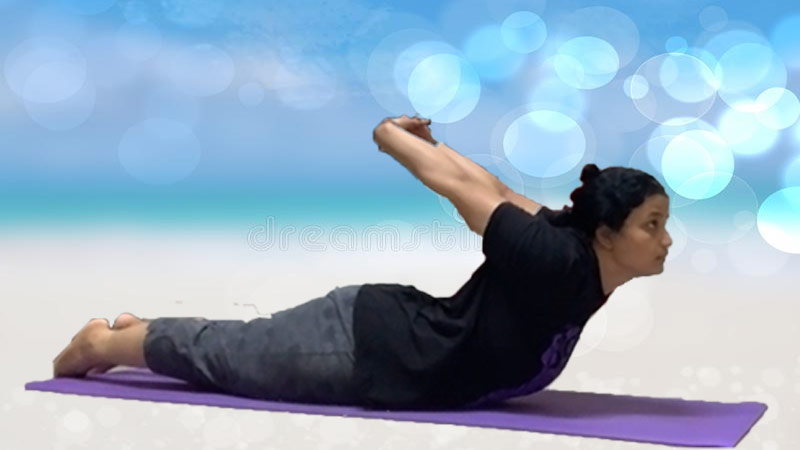Table of Contents
Sarpasana (The Snake Pose) Steps & Benefits
In the final position of Sarpasana, the posture of the body resembles a snake and that is why it is named Sarpasana. Sarpasana is derived from the Sanskrit word ‘Sarpam’ which means a snake, and therefore it is also called ‘Snake Pose’. Sarpasana can be also classified as one of the variants of Bhujangasana. Sarpasana yoga pose benefits are the same as those of Bhujangasana, with the added benefit being that this asana helps to correct the posture, particularly the rounded shoulders. This asana stretches the lungs and has a profound strengthening effect on the back muscles.
Sarpasana Steps
- Lie flat on the stomach, with the chin on the floor, feet together and legs straight.
- Interlock the fingers and place the hands on top of the buttocks.
- This is the starting position.
- Inhale and using the lower back muscles, raise your chest as far as possible from the floor.
- Push the hands further back, and raise the arms as high as is comfortable.
- Squeeze the shoulder blades together, open up the chest and imagine that the arms are being pulled from behind.
- Raise the body as high as is possible without straining and look forward.
- Hold the position as long as is comfortable, keeping the breaths deep and slow.
- Exhale and slowly return to the starting position and relax the whole body.
- Release the hands and relax the arms by the sides of the body.
- Turn the head on one side.
- This is one round. Practice two to three rounds.
Sarpasana Yoga Pose Benefits
- Sarpasana helps correct the posture, particularly rounded shoulders.
- The regular practice of Snake Pose strengthens the back muscles and spine.
- Sarpasana stretches the chest, lungs, shoulders, and abdomen.
- Its regular practice stimulates abdominal organs like the liver, kidneys, and digestive organs.
- It also tones the ovaries and the uterus and helps in menstrual and other gynecological problems.
- Sarpasana can be used as a therapeutic for asthma as it deepens breathing.
Sarpasana Contraindications
People suffering from Peptic ulcers, Hernia, Intestinal tuberculosis, Hyperthyroidism should avoid practicing Sarpasana or should practice it under the guidance of a competent yoga expert.
Sarpasana is a backward bend yoga pose. It can be followed by Salabhasana and also Shashankasana.
Also, visit – Bhujangasana-The Cobra Pose

